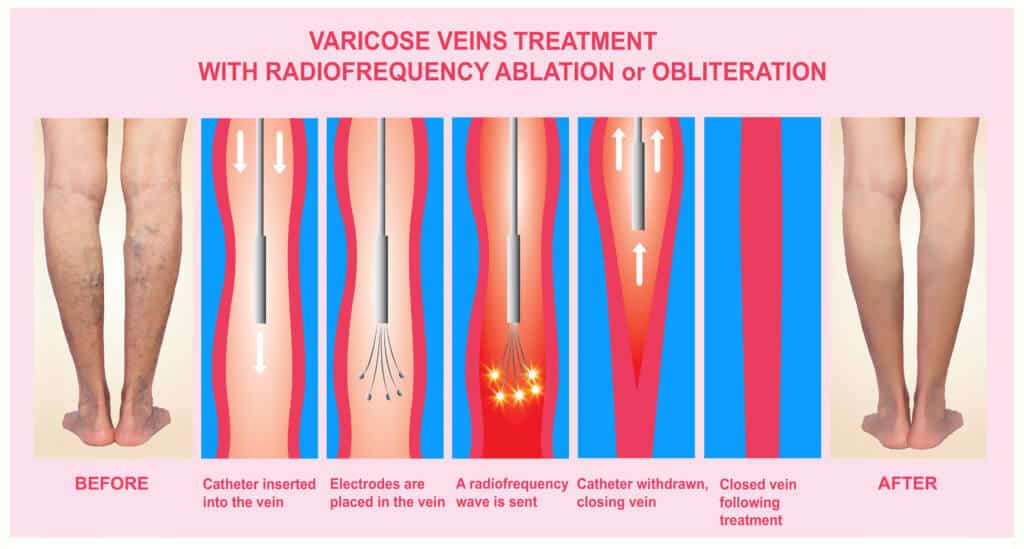This treatment is a modern alternative to traditional invasive surgical vein stripping. With this procedure, there is no need for bed rest, inactivity, hospital admission or general anaesthetic. No incisions are made meaning there are no scars. It is also considered to have a lower recurrence rate compared with surgical stripping. There are two types of thermal ablation used – Radiofrequency Ablation (RFA) and Endovenous Laser Therapy (EVLT). The only difference is the energy used to generate heat. RFA uses electrical current, while laser uses light, which is, then amplified to produce a powerful beam. Our surgeons choose to use RFA because it has a lot fewer complications, in particular, less pain post procedure.
Specialist Vein Health
Radiofrequency Ablation

Advantages of Endovenous Thermal Ablation
- Walk-in, walk-out procedure
- No general anaesthetic necessary
- Minimal discomfort
- Faster return to normal activity
- Minimal scarring

What to expect
During this treatment, a local anaesthetic is used to minimise any feelings of discomfort. A light sedative can be used to reduce feelings of anxiety, many patients sleep through the procedure.
A fine fibre is delicately passed along the abnormal vein to seal the vein with heat. This actively prevents the accumulation of blood in the incompetent vessel, and flow stops in the unhealthy vein. Blood is re-routed to healthy veins in the leg. High-resolution ultrasound is used to monitor the treatment process.
After the treatment, compression stockings are applied to help reduce the risk of the vein reopening. You will be advised on how to care for and wear these by a registered nurse on the day of your procedure. Before leaving the clinic, we will ask you to walk for 20 minutes to maximize the effects of the treatment. You will be able to resume normal activity the following day.